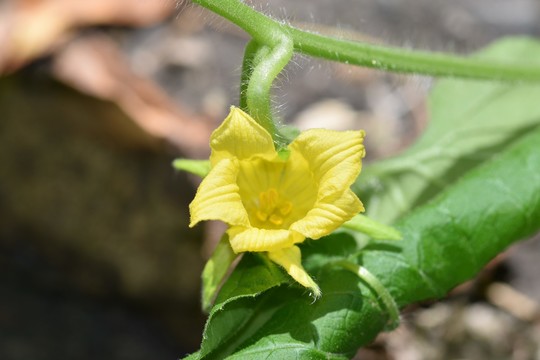|
Having trouble viewing this email? View it as a Web page.
January 31, 2023
February Weed of the Month: Noxious Weed List Updates
Plants are placed on the Noxious Weed List because they may be harmful
Emilie Justen, Minnesota Department of Agriculture
The Minnesota Department of Agriculture (MDA) added nine new weeds to the state’s Noxious Weed List on January 1, 2023. The Noxious Weed List places weeds into four categories: Prohibited Eradicate, Prohibited Control, Restricted, and Specially Regulated. These categories define how the plants must be managed. Four weeds on the list also changed categories.
 Noxious weeds are classified into one of four categories.
Click here to download the photo.
As the lead agency for noxious weed regulation, the MDA, with recommendations from the Noxious Weed Advisory Committee, updates the state’s Noxious Weed List every three years. Plants are placed on the Noxious Weed List because they may be harmful to public health, the environment, public roads, crops, livestock, or other property. There are restrictions on the weed’s sale, transport, growth, or spread.
The nine new species added to the list are:
-
Johnsongrass (Sorghum halepense) as Prohibited Eradicate
-
Pale swallow-wort (Cynanchum rossicum) as Prohibited Eradicate
-
Red hailstone/ goldencreeper (Thladiantha dubia) as Prohibited Eradicate
-
Amur silvergrass (Miscanthus sacchariflorus) as Restricted
-
Lesser celandine (Ficaria verna) as Restricted
-
Saltcedar (Tamarix ramoissima) as Restricted
-
Amur corktree (Phellodendron amurense) as Specially Regulated
Only sales of named male cultivars are permitted. Sales of all other Phellodendron amurense are prohibited. All existing planted and escaped fruit producing trees must be controlled, by tree removal or other means, such that no seed is disseminated.
-
Callery pear (Pyrus calleryana) as Specially Regulated
Three-year production phase-out period, after which sale of this species will be prohibited and the species will be designated as Restricted in 2026.
-
Tatarian maple (Acer tataricum) as Specially Regulated
Sellers shall affix a label that advises “Tatarian maple should only be planted in areas where the seedlings will be controlled or eradicated by mowing or other means. Tatarian maple seed is wind dispersed so trees should not be planted closer than 100 yards from natural areas."
The four species that changed category are:
-
Meadow knapweed (Centaurea x moncktonii) from Prohibited Eradicate to Prohibited Control
-
Poison hemlock (Conium maculatum) from Prohibited Eradicate to Prohibited Control
-
Round leaf bittersweet (formerly oriental bittersweet) (Celastrus orbiculatus) from Prohibited Eradicate to Prohibited Control
-
Winged burning bush (Euonymus alatus) from Specially Regulated to Restricted
 Red hailstone has a bright yellow flower in late summer.
Click here to download the photo.
Prohibited Eradicate species are considered a serious threat and are the state’s highest priority noxious weeds. These species must have all above and below ground parts of the plant destroyed.
Prohibited Control weeds are found in higher populations than those on the Eradicate species list, and they must be stopped before the weeds mature and spread through seeds, cuttings, and other plant parts.
Restricted noxious weeds are widely found throughout Minnesota. Landowners with Restricted weeds on their property are encouraged to manage these species but cannot be forced to do so under the Noxious Weed Law.
Specially Regulated plants are native or have the potential to cause harm in non-managed landscapes. These weeds have specific management plans developed by the MDA, and measures must be taken to minimize their potential harm.
To view the updated Noxious Weed List and to learn more about the category definitions, go to www.mda.state.mn.us/noxiousweedlist.
MEDIA: For more information on Weed of the Month, contact Brittany Raveill, MDA Communications, at brittany.raveill@state.mn.us or 651-201-6131
|